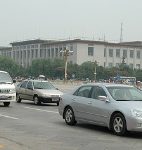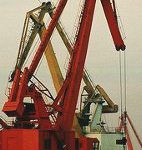In an age of financial crisis, energy insecurity and climate change, how do we really know if we are moving in the right direction? Leaders from the Group of Eight (G8) nations, gathering in Italy later this week, believe that economic growth crudely measured by gross domestic product (GDP) holds the key. Yet, following the siren song of economic growth has delivered only marginal benefits to the world’s poorest, while undermining the basis of their livelihoods. Neither has it notably improved the well-being of those who were already rich – or even provided economic stability. And that is before we begin to address environmental resource use.
In the United Kingdom, prime minister Gordon Brown recently restated his belief that the global economy stands to double in size over the next 20 years. He fails to mention – or doesn’t know – that each “doubling” of the economy uses as many resources as all of the previous doublings combined. Since the world as a whole already uses more resources and produces more waste collectively than our forests, fields, oceans and atmosphere can safely provide and absorb, there is one question we must ask: where will the resources to double the size of the global economy come from? Clearly, we need a new measure to chart a new course, before high-consuming lifestyles plunge us into the chaos of irreversible climate change.
One such measure is provided by the Happy Planet Index (HPI). First launched three years ago by nef (the new economics foundation), the HPI is a radical departure from the current focus on GDP as the ultimate measure of societal success. Working from first principles, the HPI identifies health and a positive experience of life as universal human goals, and the natural resources that our human systems depend upon as fundamental inputs. A successful society then, is one that can support good lives that don’t cost the earth. As the US ecological economist Herman Daly puts it, the HPI is the ultimate efficiency measure.
The second global compilation of the HPI has now been calculated, with new data sets for 143 countries (99% of the world’s population). The results show that the world is still far from achieving sustainable well-being. However, by turning the idea of progress on its head, the report also reveals signs of hope. Although the HPI shows that the countries where people enjoy the happiest and healthiest lives are largely richer, developed countries, it also reveals the unsustainable ecological price we all pay as a result. And there are a number of notable exceptions: for instance, less wealthy countries with significantly smaller ecological footprints, and high levels of life expectancy and life satisfaction.
Latin America dominates the top of the HPI: nine of the 10 highest-scoring nations are Latin American, and Costa Rica is the highest scoring nation on the index. Overall, middle-income countries, such as those in Latin America and southeast Asia, tend to be the closest to achieving sustainable well-being. However, no country achieves a good score on all three components that make up the HPI: life satisfaction, life expectancy and ecological footprint. Even working at its optimum level, our current model is unable to deliver.
China fares relatively well, coming 20th out of 143 countries, but is the highest scoring country not to achieve a good score on at least one of the components. China’s ecological footprint was 2.1 global hectares per person in 2005, the latest year data are available. This exactly represents a fair share of the earth’s resources, given its current biocapacity and population – the level described as “one-planet living”. However, if the steady increases observed in the country’s ecological footprint over the last 20 years continue, we should not expect China to stay at this sustainable threshold for very long.
The HPI also reveals just how much China has much in common with the two other biggest countries in the world, India and the United States. All three are aggressively pursuing growth-based development models. All three have seen their HPI scores drop during the last two decades, not only as a result of bigger ecological footprints, but also because levels of well-being are lower than in 1990. Experience in China bears this out. As Sam Geall, deputy editor of chinadialogue, observes in his contribution to the HPI report: “despite the many benefits of the move to a market economy, including soaring GDP and much poverty reduction, many people have felt sharply the downsides of rapid growth.”
However, although China’s HPI score is clearly heading in the wrong direction, most rich, developed nations perform far worse than China, falling somewhere in the middle of the index. The highest-placed western nation is the Netherlands, which comes 43rd out of 143. The United Kingdom ranks midway down the table, at 74th, behind Germany, Italy and France, while the United States comes a long way back in 114th place.
The results of the HPI do provide some grounds for optimism. Comparisons between nations show that long, happy lives can be achieved with far lower levels of resource use. People in the Netherlands live on average over a year longer than people in the United States and have similar levels of life satisfaction – yet their per capita ecological footprint is less than half the size. This means that the Netherlands is over twice as ecologically efficient at achieving good lives as the US. Costa Ricans also live slightly longer than Americans, and report much higher levels of life satisfaction, and yet have a footprint that is less than one-quarter of the size.
The report contains a range of suggestions for strategies which could help to achieve sustainable well-being, drawing on living examples from around the world, where people, communities and governments have taken action to enhance well-being while reducing ecological footprint. The report also introduces a “Happy Planet Charter” calling for an unprecedented collective global effort to develop a new narrative of human progress and reduce consumption in the highest-consuming nations as the biggest single barrier to sustainable well-being. It highlights the importance of governments consistently and regularly measuring people’s well-being, and sets ambitious targets for both developed and developing nations. By presenting a compelling new vision of what is possible, the Happy Planet Index might inspire the action that can deliver good lives for all, without bankrupting the earth we live in. Let’s hope the G8 listen.
Juliet Michaelson is a co-author of The Happy Planet Index 2.0 and a senior researcher at nef (the new economics foundation).
The Happy Planet Index 2.0: Why good lives don’t have to cost the Earth was published by nef (the new economics foundation) on July 4, 2009.
Homepage image by puroticorico


